4 File System
Basic
Data Structure of File system
Directory Structure:
A directory is a file containing <file_name:file_number> mappings(each called a directory entry)
File (and directory) defined by header, called "inode"(i = index)
Each inode contains file attributes (permissions, timestamps, owner) and the index blocks
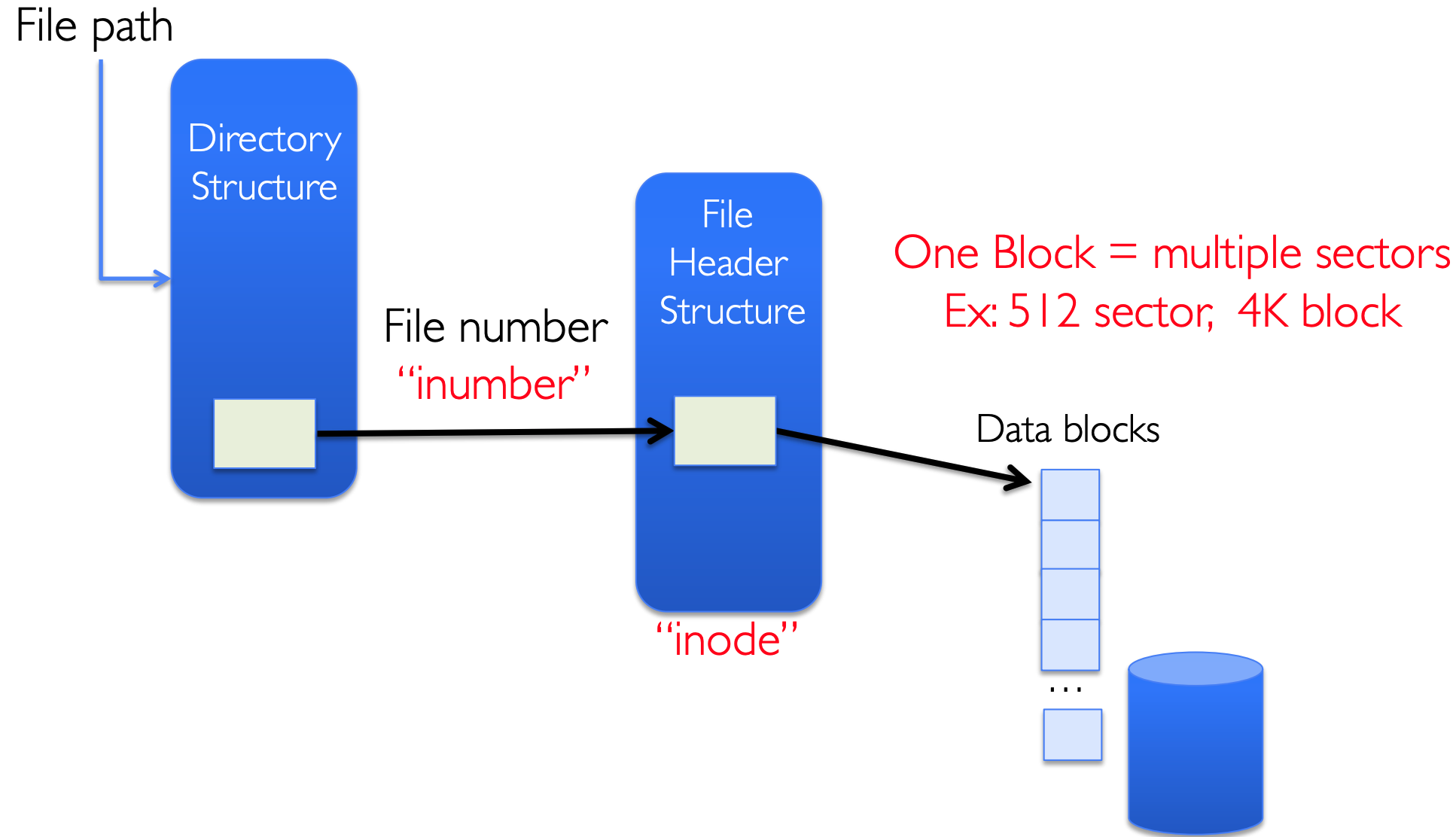
Open performs Name Resolution: Translates path name into file number
Read and Write operate on the file number
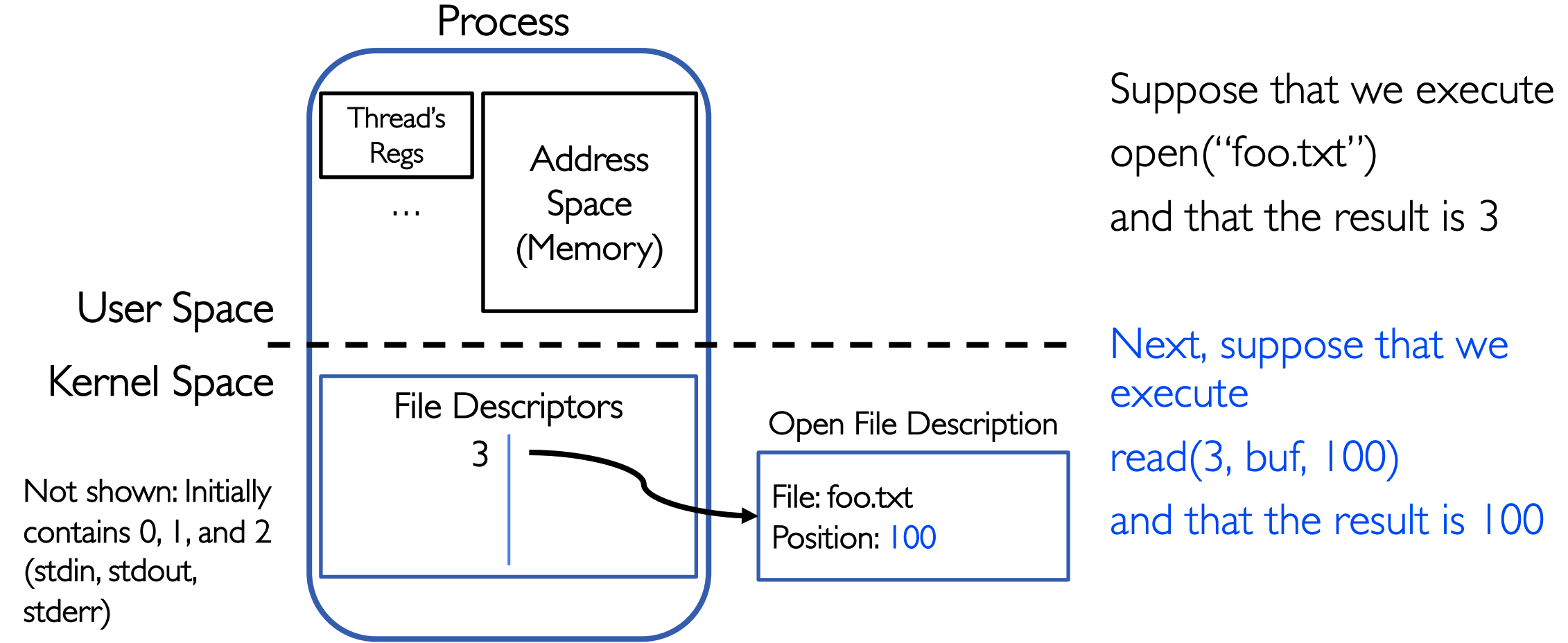
File Storage on Disk

Super Block
- number of blocks
- size of data blocks
- free-block count
- location of the file descriptor of the root directory
Directory Structure
To acclerate the process of finding a file and enable sharing, use DAG
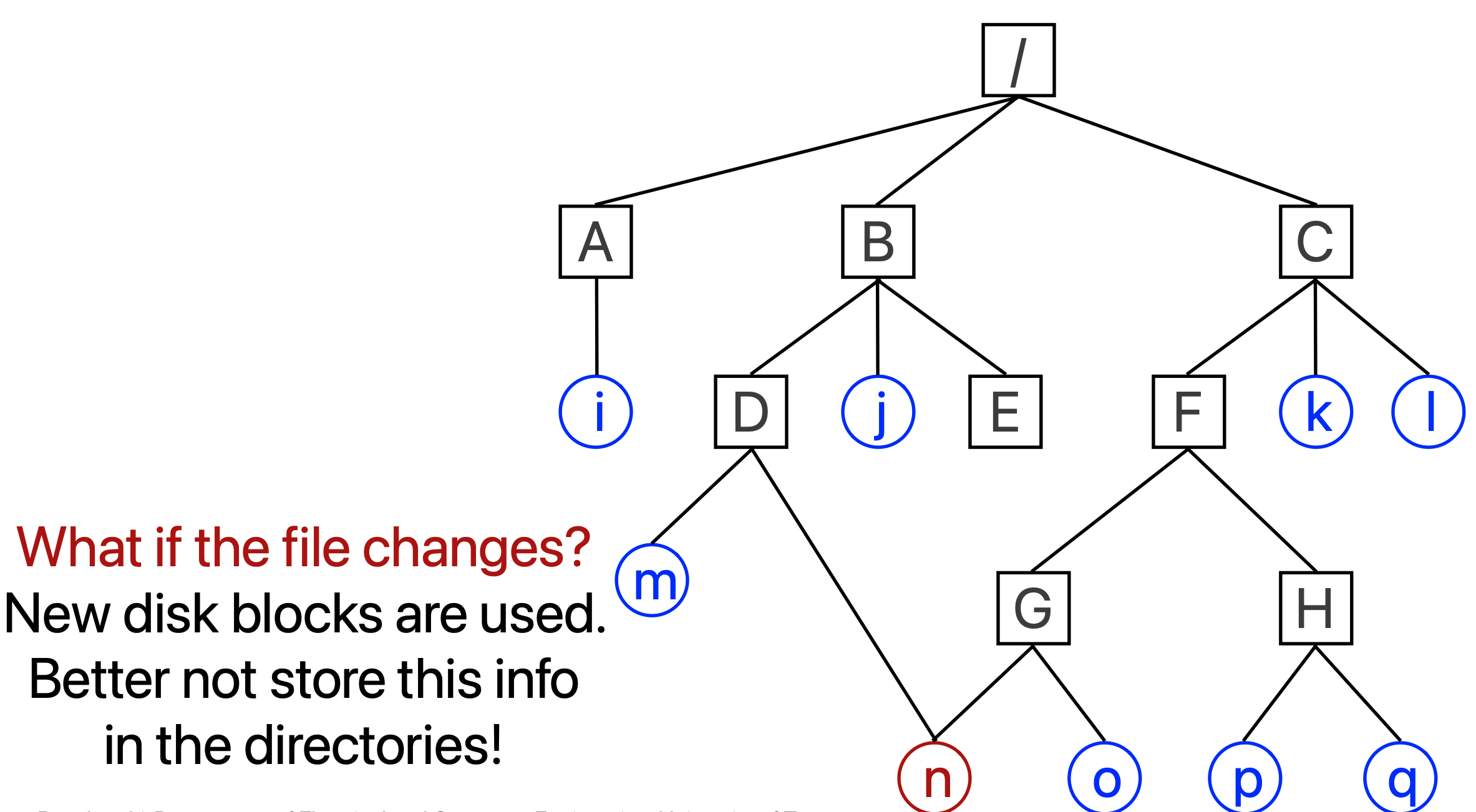
Hard Links and Symbolic Links
- Hard links: Both directory entries point to the same inode
- The file may have a different name in each directory
- Symbolic links: One directory entry points to the file’s inode, Other directory entries contains the "path"
- inode different
7 disk accesses to resolve "/my/book/count"
- Read in file header for root (fixed position on disk)
- Read in first data block for root, search for "my"
- Read in file header for "my"
- Read in first data block for "my"; search for "book"
- Read in file header for "book"
- Read in first data block for "book"; search for "count"
- Read in file header for "count"
File Allocation
Contiguous Allocation
All blocks in a file are contiguous on the disk, Search bit map or linked list to locate a space
File header:
- first sector in file
- number of sectors
Pros
- Simple to implement (only needs starting block & length of file)
- Fast sequential access
- Easy random access
Cons
- External fragmentation
- hard to grow files when new file is inserted into a hole
Linked List Allocation
Each file is a sequence of blocks. File header points to 1st block on disk, each block points to next
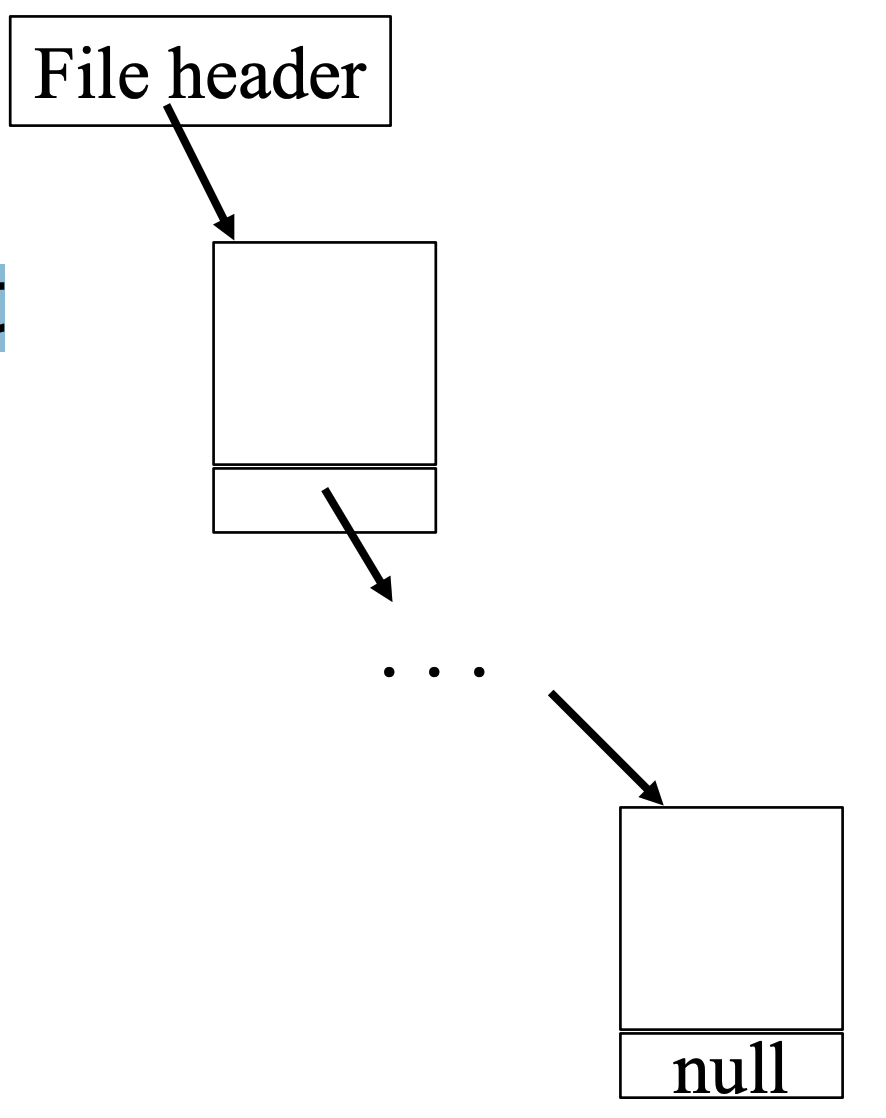
Pro
- No external fragmentation
- easy to grow files
Cons
- bad random access
- unreliable: losing a block means losing the rest
Variation: File Allocation Table(FAT)
FAT is linked list 1-1 with blocks, follow list to get block number, unused blocks marked free
Ex: file_write 31, < 3, y > (y: offset within block)
- Grab free block
- Linking them into file
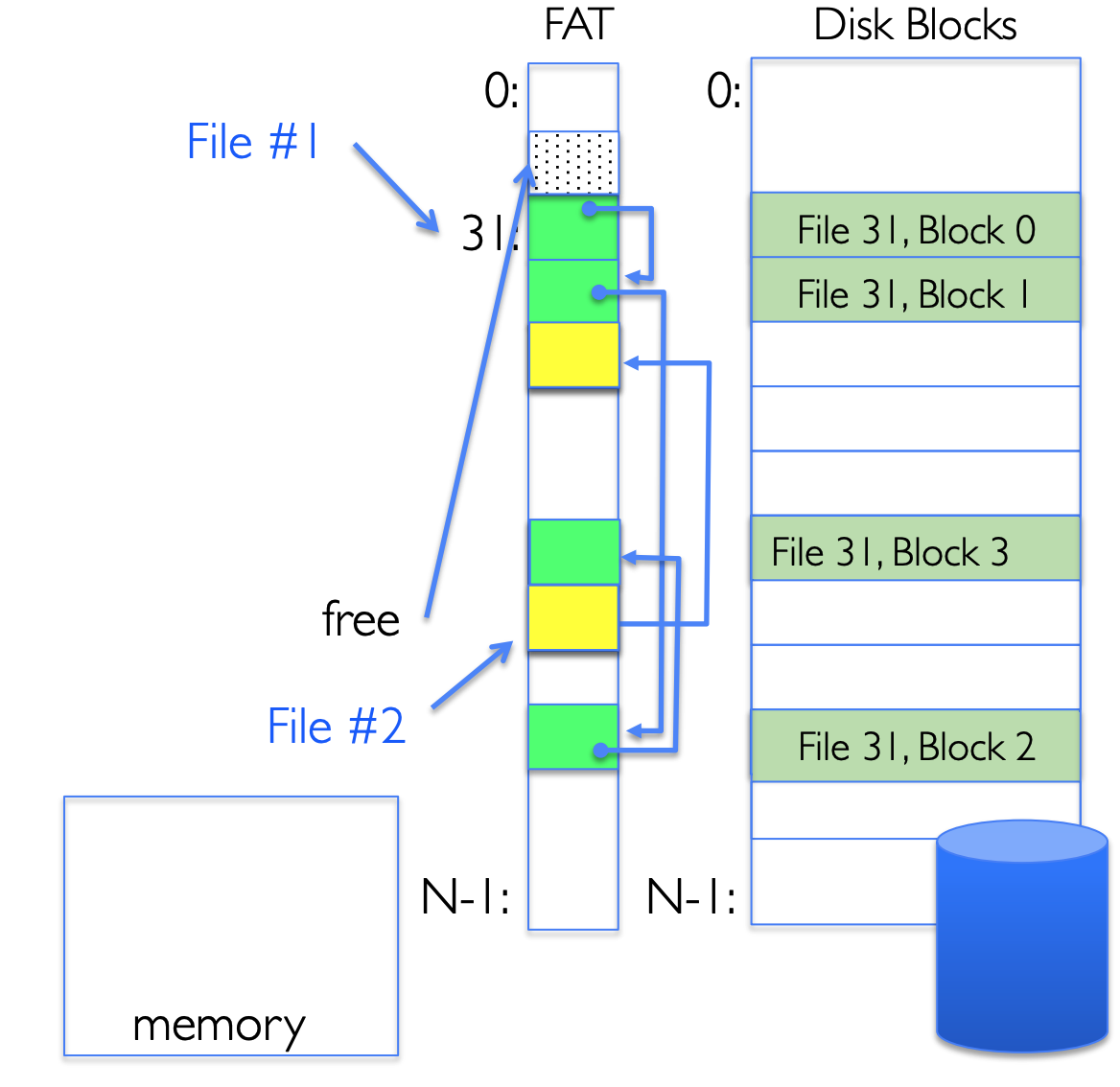
FAT directory: Directory entry needs only the starting block number

Format a disk: Zero the blocks, mark FAT entries "free"
Quick format: Mark FAT entries "free"
Used in MS-DOS
Pros:
- Easy to delete a file
- Easy to append to a file
Cons:
- Small file access slow(seek time latency between blocks)
- Random access slow(sequential search)
- memory overhead
- 20 GB disk size, 1 KB block size, 4 bytes FAT entry size. Need 80MB to store FAT
Indexed Allocation
Berkeley F(Fast)FS / UNIX FS
inode
- Metadata(File owner, access permissions, access times, …)
- Small Files: 12 Direct pointers With 4KB blocks => max size of 48KB files
- Large Files: Indirect block pointers, each block supports 1K ptrs
- indirected block pointer => max 4 MB
- Doubly indirected block pointer => max 4 GB
- Triply indirected block pointer => max 4 TB
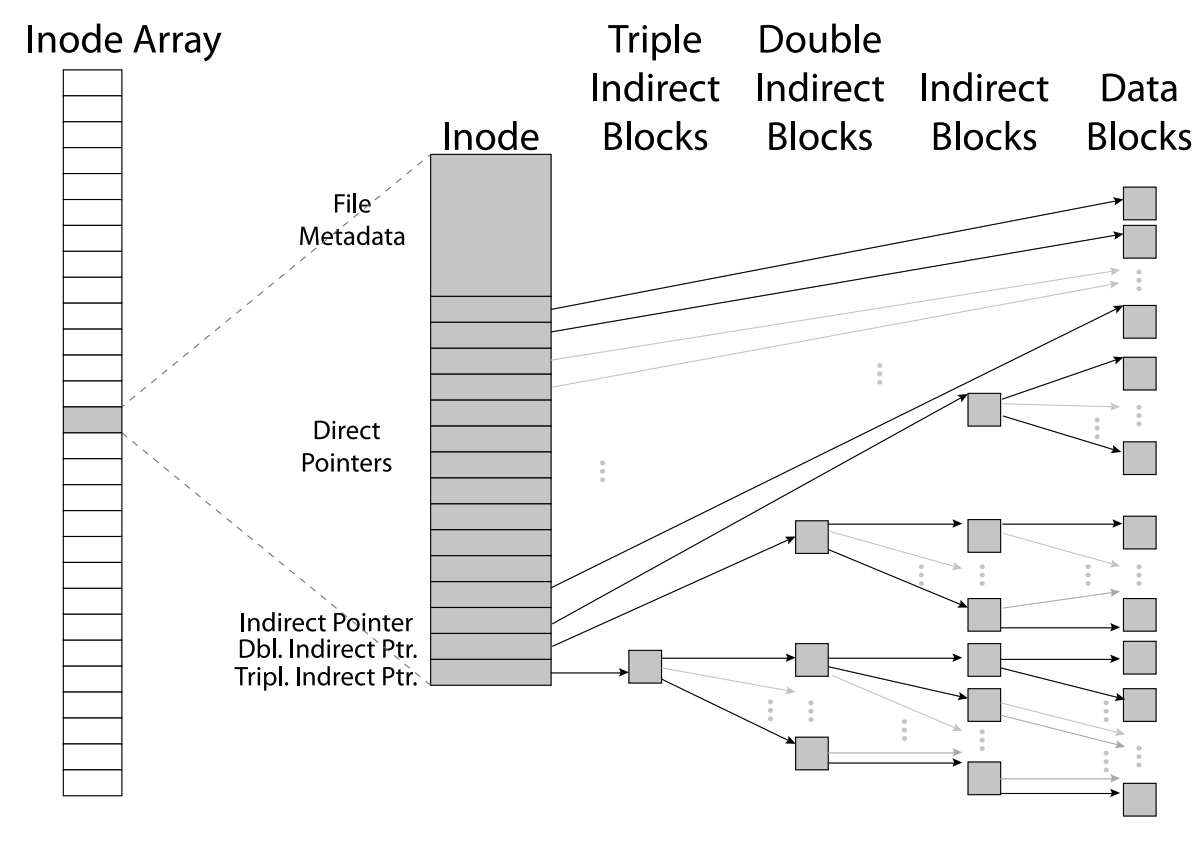
Pros
- Efficient storage for both small and large files
- Locality for both small and large files
- Locality for metadata and data
- No defragmentation necessary!
Cons
- Inefficient for tiny files (a 1 byte file requires both an inode and a data block)
- Inefficient encoding when file is mostly contiguous on disk
- Need to reserve 10-20% of free space to prevent fragmentation